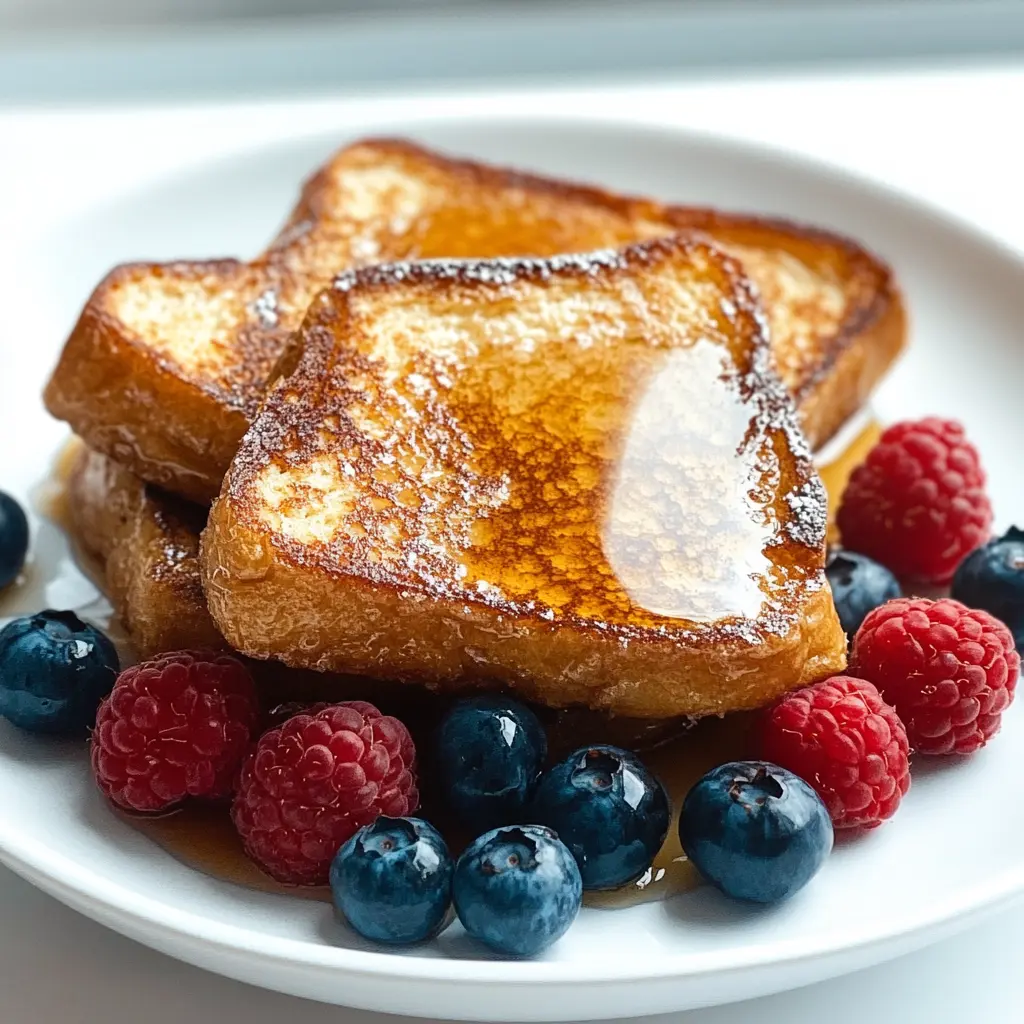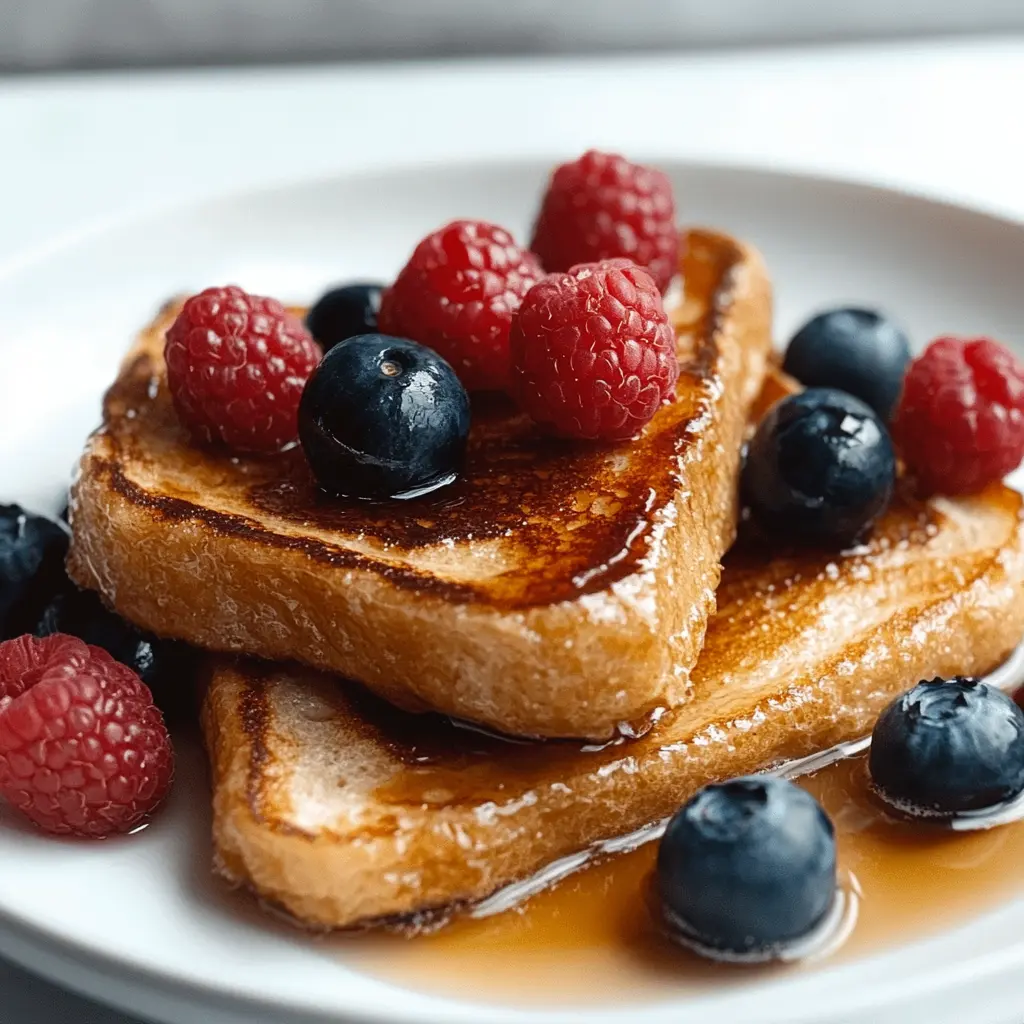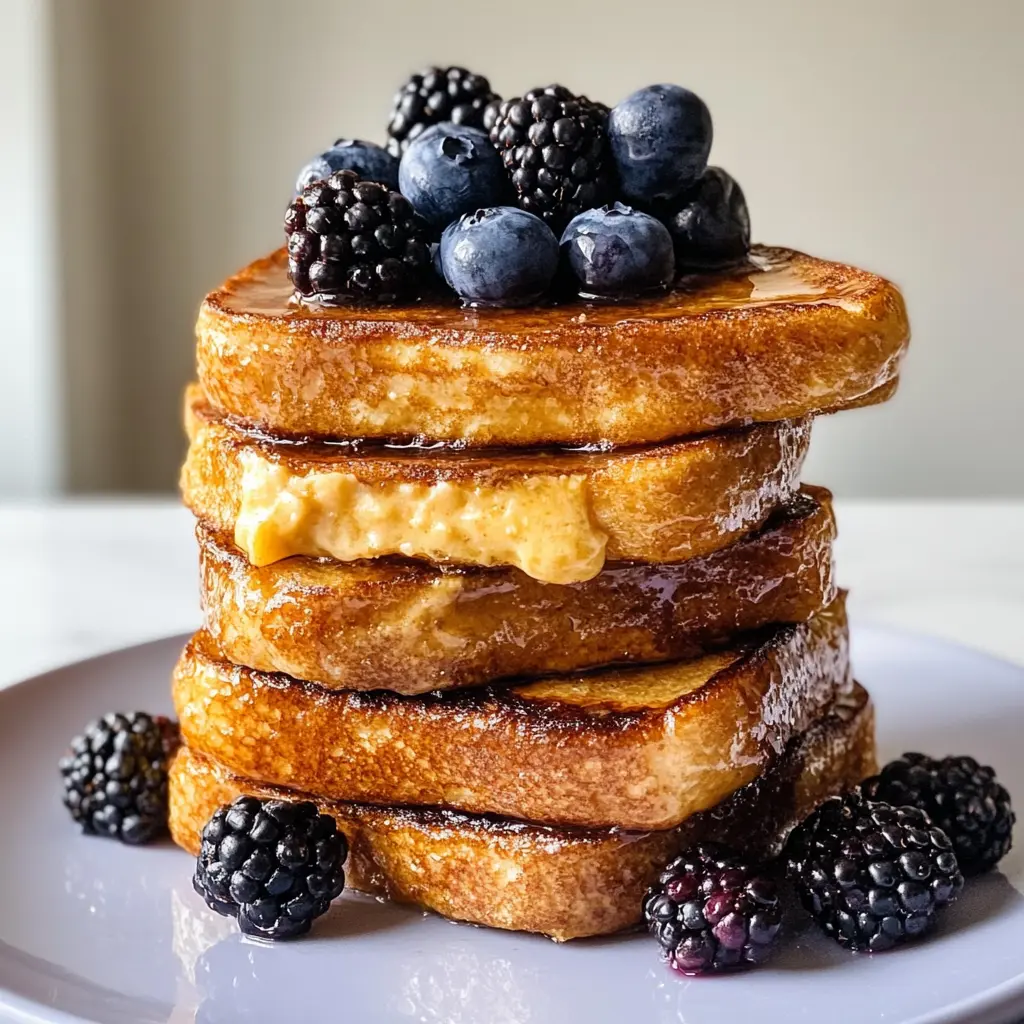Introduction
Introduction to French Toast Without Eggs
French toast, a beloved breakfast classic, typically features bread soaked in a mixture of eggs and milk, then fried to golden brown perfection. This delightful dish, known for its creamy interior and crispy exterior, has been a staple in many households around the world.
However, French toast without eggs offers a fantastic alternative for those who have egg allergies, follow a vegan diet, or simply prefer an egg-free breakfast option. Creating an egg-free version of this popular dish is not only possible but also incredibly delicious. By using clever substitutes, you can enjoy the same great taste and texture without the use of eggs.
Why might someone choose egg-free French toast? The reasons vary: some people have dietary restrictions due to allergies, while others follow a vegan lifestyle. Additionally, those looking to reduce their cholesterol intake or trying to cut down on animal products might opt for an egg-free version. This recipe caters to all these needs without compromising on flavor or satisfaction.
And for more information about different recipes and ingredients, check What is Mac and Cheese Made Of? Exploring Ingredients and Recipes.
Ingredients and Substitutes
Essential Ingredients for Egg-Free French Toast
Creating French toast without eggs is both simple and delicious. Here are the basic ingredients you’ll need:
- Bread: Choose thick slices of bread like brioche, challah, or sourdough.
- Milk or Milk Substitute: Use dairy milk or a plant-based milk such as almond, soy, or oat milk.
- Sweetener: A bit of sugar, maple syrup, or agave nectar to sweeten the mixture.
- Flavorings: Vanilla extract and a pinch of salt enhance the taste.
- Spices: Ground cinnamon and nutmeg for a warm, comforting flavor.
- Fat for Frying: Butter, margarine, or a plant-based spread for frying.
The secret to a perfect egg-free French toast lies in the substitutes that mimic the texture and binding properties of eggs. Common substitutes include:
- Flaxseed Meal: Mix one tablespoon of ground flaxseed with three tablespoons of water and let it sit for a few minutes until it becomes gelatinous.
- Mashed Banana: Half a banana, mashed, can replace one egg, adding a slight sweetness and binding the ingredients.
- Yogurt: Both dairy and non-dairy yogurts work well. Use a quarter cup to replace one egg, adding creaminess to the mixture.
Experimenting with these substitutes can help you find the perfect balance of flavor and texture for your egg-free French toast. And for more delicious ideas, check Best Cheeses for Mac and Cheese: What 2 Cheeses Are Best?.
Choosing the Right Bread
The bread you choose plays a crucial role in the success of your egg-free French toast. Ideal types of bread include:
- Brioche: Known for its rich, buttery texture.
- Challah: Slightly sweet and soft, perfect for soaking up the mixture.
- Sourdough: Offers a unique tangy flavor and a sturdy texture.
When selecting the best bread, consider these tips:
- Thickness: Opt for thick slices to prevent the bread from becoming too soggy.
- Staleness: Slightly stale bread works best as it absorbs the liquid mixture without falling apart.
- Texture: Choose bread with a firm texture to hold up during cooking.
Following these guidelines ensures a delicious and satisfying egg-free French toast. For more on gluten-free options, check Gluten-Free Mac and Cheese: Does It Taste Different?.
Recipe Variations
Classic French Toast Without Eggs Recipe
Creating a delightful French toast without eggs is straightforward with this recipe:
Ingredients:
- 4 slices of thick bread (brioche, challah, or sourdough)
- 1 cup of milk or plant-based milk
- 1 tablespoon of ground flaxseed mixed with 3 tablespoons of water (flaxseed egg)
- 1 tablespoon of sugar or maple syrup
- 1 teaspoon of vanilla extract
- 1/2 teaspoon of ground cinnamon
- Pinch of salt
- Butter or plant-based spread for frying
Instructions:
- In a bowl, whisk together the milk, flaxseed egg, sugar, vanilla extract, cinnamon, and salt until well combined.
- Heat a large skillet over medium heat and add a tablespoon of butter or plant-based spread.
- Dip each slice of bread into the mixture, ensuring both sides are well coated but not soaked through.
- Place the coated bread slices in the skillet and cook for 3-4 minutes on each side, or until golden brown and crispy.
- Serve hot with your favorite toppings such as fresh fruit, syrup, or powdered sugar.
Tips for Perfecting the Recipe:
- Use slightly stale bread to prevent sogginess.
- Ensure the skillet is properly heated before adding the bread.
- Cook on medium heat to ensure even cooking without burning.
For more indulgent recipes, check Seafood Mac and Cheese: A Rich and Creamy Delight.
Vegan French Toast
This vegan French toast is not only delicious but also cruelty-free and suitable for those following a plant-based diet.
Ingredients:
- 4 slices of thick bread (brioche, challah, or sourdough)
- 1 cup of almond milk or any plant-based milk
- 2 tablespoons of chickpea flour or cornstarch
- 1 tablespoon of maple syrup
- 1 teaspoon of vanilla extract
- 1/2 teaspoon of ground cinnamon
- Pinch of salt
- Coconut oil or vegan butter for frying
Instructions:
- In a bowl, whisk together the almond milk, chickpea flour, maple syrup, vanilla extract, cinnamon, and salt until smooth.
- Heat a skillet over medium heat and add a tablespoon of coconut oil or vegan butter.
- Dip each slice of bread into the mixture, making sure both sides are evenly coated.
- Cook the coated bread slices in the skillet for 3-4 minutes on each side, or until golden brown and crispy.
- Serve immediately with toppings like fresh berries, nuts, or a drizzle of maple syrup.
Benefits of Vegan French Toast:
- Plant-based ingredients are often lower in saturated fat.
- Suitable for those with dairy or egg allergies.
- Aligns with ethical and environmental values of veganism.
Explore more unique flavors with White Cheddar Mac and Cheese: What Does It Taste Like?.

Dairy-Free French Toast
For those avoiding dairy, this dairy-free French toast is a perfect choice.
Ingredients:
- 4 slices of thick bread (brioche, challah, or sourdough)
- 1 cup of oat milk or any plant-based milk
- 1 tablespoon of ground flaxseed mixed with 3 tablespoons of water (flaxseed egg)
- 1 tablespoon of agave nectar or maple syrup
- 1 teaspoon of vanilla extract
- 1/2 teaspoon of ground cinnamon
- Pinch of salt
- Olive oil or plant-based spread for frying
Instructions:
- In a bowl, whisk together the oat milk, flaxseed egg, agave nectar, vanilla extract, cinnamon, and salt until well combined.
- Heat a skillet over medium heat and add a tablespoon of olive oil or plant-based spread.
- Dip each slice of bread into the mixture, ensuring both sides are well coated.
- Place the coated bread slices in the skillet and cook for 3-4 minutes on each side, or until golden brown and crispy.
- Serve hot with your favorite toppings such as fresh fruit, syrup, or powdered sugar.
Benefits of Dairy-Free French Toast:
- Great for those with lactose intolerance or dairy allergies.
- Can be lower in fat and calories depending on the plant-based milk used.
- Fits into a variety of dietary preferences and restrictions.
For more insights into creamy recipes, check Cream Cheese and Mac and Cheese: Ultimate Guide.
Cooking Techniques
Cooking Methods
Stovetop Method
The stovetop method is the most traditional way to cook French toast without eggs. Heat a skillet over medium heat and melt a tablespoon of butter or a plant-based spread. Dip each bread slice into the prepared mixture, ensuring both sides are well-coated but not overly soaked. Place the coated bread in the skillet and cook for 3-4 minutes on each side until golden brown and crispy. This method allows for easy monitoring and ensures a perfectly crisp exterior.
Baking Method
For a hands-off approach, the baking method is ideal. Preheat your oven to 350°F (175°C) and line a baking sheet with parchment paper. Arrange the coated bread slices on the baking sheet and bake for 15-20 minutes, flipping halfway through. This method yields evenly cooked French toast with a slightly crisp texture and is perfect for making larger batches. It also allows you to prepare other components of your meal simultaneously.
Air Fryer Method
The air fryer method is a modern twist that ensures a crispy texture with less fat. Preheat your air fryer to 375°F (190°C). Place the coated bread slices in the air fryer basket in a single layer. Cook for 8-10 minutes, flipping halfway through. This method is quick and results in a perfectly crispy exterior, making it a healthy alternative to traditional frying.
For more delicious recipes, check Crock Pot Mac and Cheese: Ultimate Recipe with Cream.
Tips for Avoiding Common Mistakes
Preventing Soggy Toast
To prevent soggy French toast, use slightly stale or day-old bread, which absorbs the liquid mixture without becoming mushy. Also, avoid soaking the bread for too long; a quick dip on each side is sufficient. Ensure your skillet or cooking surface is preheated before adding the bread, as this helps to sear the exterior quickly and lock in moisture without making the toast soggy.
Ensuring Even Cooking
Even cooking is crucial for perfect French toast without eggs. Maintain a medium heat to avoid burning the exterior while the interior remains undercooked. Flip the toast only once, allowing each side to cook fully. When using the baking or air fryer method, flip the bread slices halfway through the cooking time to ensure both sides are evenly cooked.
For tips on keeping your dishes creamy and delicious, check How to Keep Mac and Cheese Creamy: Ultimate Guide.
Serving Suggestions
Toppings and Accompaniments
Popular Toppings
Enhancing your French toast without eggs with the right toppings can elevate the dish to new heights. Some classic and popular options include:
- Fresh Fruit: Strawberries, blueberries, bananas, and raspberries add a burst of natural sweetness and vibrant color.
- Maple Syrup: A drizzle of maple syrup adds a rich, sweet flavor that complements the crispy toast.
- Powdered Sugar: A light dusting of powdered sugar gives a delicate sweetness and an elegant touch.
- Whipped Cream: Dollops of whipped cream (dairy or non-dairy) provide a luscious, creamy contrast.
- Nut Butters: Spread almond butter, peanut butter, or any nut butter for added protein and flavor.
- Chocolate Chips: Sprinkle some chocolate chips for a decadent treat.
Creative Topping Ideas
For a unique twist, try these creative toppings:
- Coconut Flakes: Add a tropical flair with toasted coconut flakes.
- Nuts and Seeds: Sprinkle chopped almonds, walnuts, chia seeds, or flaxseeds for a crunchy texture.
- Spiced Apples: Sautee apple slices with cinnamon and a bit of sugar for a warm, spiced topping.
- Savory Options: For a savory twist, try avocado slices with a sprinkle of salt and pepper or a dollop of vegan cream cheese with herbs.
For more exciting topping ideas, check Mac and Cheese Toppings: Exciting Ideas to Try.
Pairing French Toast Without Eggs with Other Foods
Breakfast Pairings
Pairing French toast without eggs with the right accompaniments can create a balanced and satisfying meal. Consider these options:
- Smoothies: A fresh fruit smoothie adds vitamins and a refreshing contrast.
- Coffee or Tea: A hot cup of coffee or tea complements the sweetness of the French toast perfectly.
- Yogurt Parfait: Layer dairy or plant-based yogurt with granola and fresh fruit for a nutritious side.
Brunch and Dinner Pairings
For a more substantial meal, try these brunch and dinner pairings:
- Salads: A light, mixed green salad with a tangy vinaigrette can balance the richness of the French toast.
- Savory Dishes: Pair with roasted vegetables, grilled mushrooms, or a side of vegan sausage for a hearty brunch.
- Soup: A warm bowl of soup, such as tomato or butternut squash, can complement the sweet and savory flavors of the French toast.
For more meal enhancement ideas, check What to Serve with Mac and Cheese: Enhance Your Meal.
Nutritional Information
Nutritional Benefits of Egg-Free French Toast
Overview of Nutritional Content
French toast without eggs can be a healthier alternative to traditional French toast. By using plant-based milk and egg substitutes like flaxseed or bananas, you can lower the cholesterol and saturated fat content. This dish can be rich in fiber (from whole grain bread), vitamins, and minerals, making it a nutritious start to your day.
Comparison with Traditional French Toast
Traditional French toast typically contains eggs and dairy, which can be high in cholesterol and saturated fats. In contrast, the egg-free version is lower in these components, making it suitable for those with dietary restrictions or health concerns. Using whole grain bread and plant-based ingredients also increases the fiber and nutrient content, providing a healthier option without compromising on taste.
For more nutritional insights, check Is Mac and Cheese Healthy? Analyzing Nutritional Impact.
Adapting the Recipe for Different Diets
Gluten-Free Options
To make your French toast without eggs gluten-free, simply use gluten-free bread. Many gluten-free breads are available in stores, or you can make your own using gluten-free flours. Ensure that all other ingredients, like plant-based milk and flavorings, are also gluten-free to avoid cross-contamination.
Low-Carb and Keto Variations
For those following a low-carb or keto diet, use low-carb bread made from almond flour or coconut flour. Replace any sweeteners with keto-friendly options like stevia or erythritol. These adjustments help keep the carbohydrate count low while allowing you to enjoy a delicious breakfast treat.
For more on adapting recipes to dietary needs, check Are Cheeses Gluten-Free? Unveiling Dairy Facts.

Conclusion
Summary and Final Thoughts
Recap of the Benefits and Versatility of French Toast Without Eggs
French toast without eggs is a versatile and inclusive recipe that caters to various dietary needs, whether due to allergies, veganism, or health preferences. It offers a delicious and satisfying alternative to traditional French toast without sacrificing flavor or texture. The ability to customize this recipe with different types of bread and egg substitutes ensures that everyone can enjoy this classic breakfast dish.
Encouragement to Try the Recipe
If you haven’t tried making French toast without eggs yet, now is the perfect time! It’s easy to prepare, adaptable to your preferences, and a delightful way to start your day. Experiment with different toppings and pairings to create your own perfect breakfast or brunch experience.
For more comfort food ideas, check Smoked Mac and Cheese: Ultimate Comfort Food Guide.
FAQs
Can I make French toast without eggs and still get a similar texture?
Yes, you can achieve a similar texture by using substitutes like flaxseed meal, mashed bananas, or yogurt, which provide the necessary binding and moisture.
What can I use instead of eggs in French toast?
Common egg substitutes include flaxseed meal, mashed bananas, yogurt, and chickpea flour mixed with water. These alternatives help mimic the binding properties of eggs.
Is French toast without eggs suitable for vegans?
Absolutely! By using plant-based milk and egg substitutes, French toast without eggs is completely vegan-friendly.
How do I store and reheat French toast without eggs?
Store leftovers in an airtight container in the refrigerator for up to 3 days. Reheat in a skillet over medium heat or in the oven at 350°F until warmed through.
Can I freeze French toast without eggs?
Yes, you can freeze it. Place the cooked French toast on a baking sheet to freeze individually, then transfer to a freezer-safe bag. Reheat directly from frozen in the oven or toaster.
For more delicious pairings, check Best Cheese with Seafood: Discover the Top Pairings.



